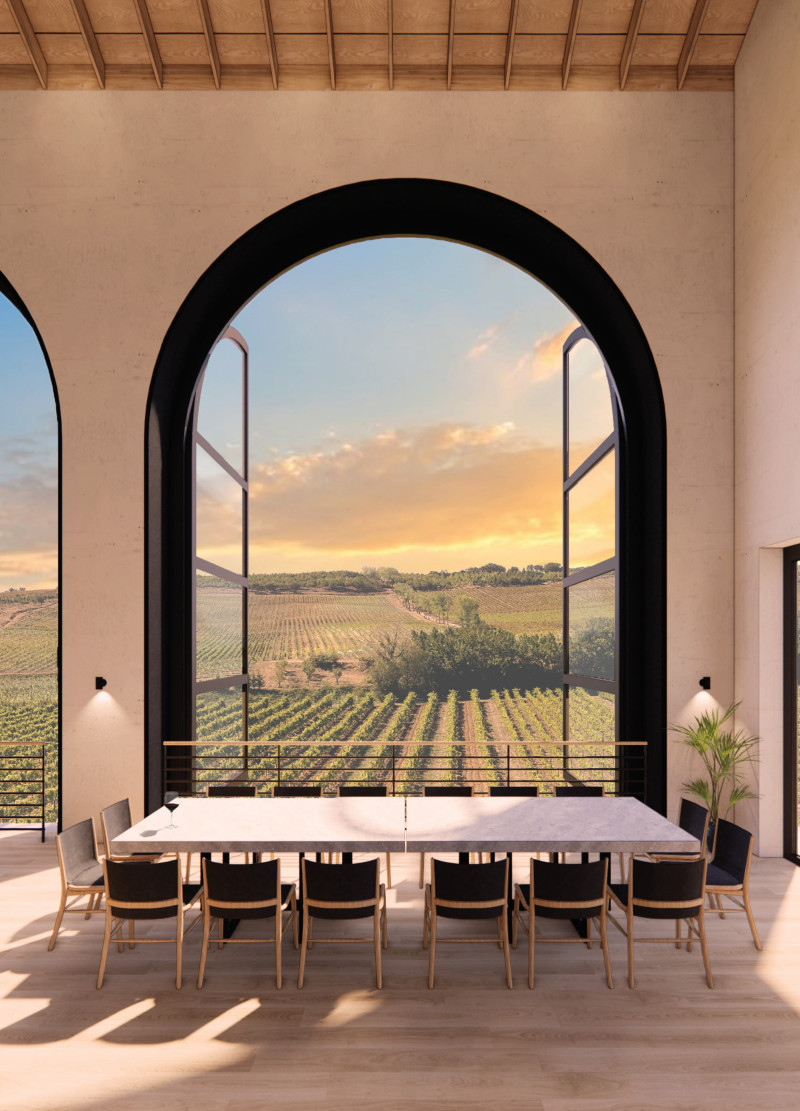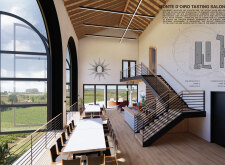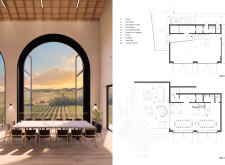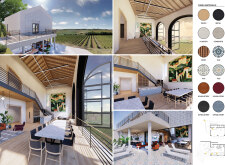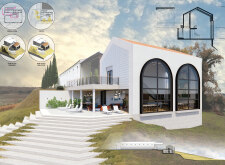5 key facts about this project
The Monte D'Oiro Tasting Salon is an architectural addition set within a hillside landscape. This structure functions as an important part of a winery, providing a space for wine tasting and community activities. The design approach emphasizes good relationships between the building and its natural surroundings, respecting the site's beauty while reflecting the winery's history.
Architectural Concept
The concept focuses on how the building blends with its environment, avoiding a dominating presence on the site. It features modern lines and shapes while taking inspiration from local architecture. This connection to traditional styles helps the design feel at home in its geographical context, creating a sense of belonging.
Functional Layout
The tasting salon includes well-planned spaces such as the Wine Tasting Room, Winery, Barrel Room, Conference Room, Chapel, and Kitchen. Each area serves a specific purpose, supporting activities linked to winemaking and encouraging education and social interaction. The arrangement of spaces allows for easy movement and promotes engagement among visitors and staff, enhancing the overall experience.
Materiality
Materials used in the construction include wood, metal, plaster, concrete, roof tiles, and upholstery. Choosing these materials contributes to the building's visual quality and ensures durability. Each element connects with the local environment, reinforcing the feeling of place while creating an inviting atmosphere for visitors.
Environmental Considerations
Attention to environmental factors is visible in the design choices, especially regarding light and circulation. By conducting sun studies for the equinox and solstice, the placement of windows and overhangs is optimized. This ensures good light exposure while reducing heat gain. The thoughtful arrangement enhances views of the landscape, allowing the structure to connect visually with its surroundings.
The vertical lines of the salon reflect the hillside's form, effectively connecting the building to the natural landscape.


